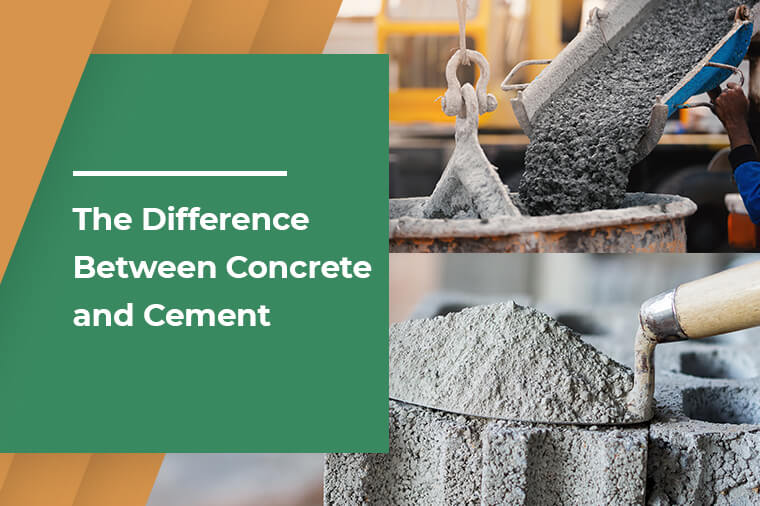The Difference Between Concrete and Cement

To All Our Valued Customers, Over the past few years, the Covid 19 Pandemic has forced us to adapt and change the way we do things on a day-to-day basis. Florida Lumber is no exception. To make sure that we remain strong and competitive in the market for the years to come, Florida Lumber has had to adjust and change our vision for the future. In the last 2 years, we have stopped selling Sheetrock and drywall products, roofing felt and roofing materials, and have even closed on Saturdays.
Over the last few months, we have been transitioning our way out of the door supply business so on August 31, 2022, our door shop will stop assembling doors. We will continue liquidating our doors from inventory until we are out of material.
Some customers have asked if we are closing or even moving locations. To set the story straight, we are not closing or selling the business and we are not moving. These changes are all part of our new vision and path to continue serving South Florida and increasing our footprint in the construction supply industry.
Our focus is going to be on Lumber, Construction Materials, Rebar Fabrication and Rebar Accessories. As we have liquidated some of the items that we don’t sell anymore we have created more space to buy a larger volume of our core items and pass on the savings to our customers.
In the next year you will start seeing changes that will help improve our ability to serve you, our customers. We appreciate your business and your patience as Florida Lumber’s new vision becomes reality.
A Todos Nuestros Valiosos Clientes En los ultimos anos, la pandemia de el Virus (Covid 19) nos ha forzado a adaptarnos y cambiar la forma de hacer cosas en el dia a dia. Florida Lumber no ha sido una excepcion.
Para asegurarnos de mantenernos fuertes y competitivos en el mercado en los anos venideros, Florida Lumber ha tenido que ajustar y cambiar nuestra vision para el futuro. En los dos ultimos anos hemos dejado de vender los productos de yeso (sheetrock), paneles de yeso (drywall), tela asfaltica (roofing felt), materiales de techo y cerramos los Sabados. En los ultimos meses, hemos estado en transicion para salir del negocio de suministro de puertas, en Agosto 31, del 2022 nuestra tienda de puertas dejara de construir y/o cortar puertas. Vamos a continuar liquidando nuestro inventario de puertas haste que terminemos todo el material. Algunos de nuestros clientes han preguntado si estamos cerrando o si nos estamos moviendo a otra localidad. La verdad es que no estamos cerrando, no estamos vendiendo y no estamos cambiando de localidad. Estos cambios son todos parte de nuestra nueva vision y camino a continuar sirviendo al estado sur de la Florida y incrementar nuestras huellas en la industria de suministros de construccion.
paneles de yeso (drywall), tela asfaltica (roofing felt), materiales de techo y cerramos los Sabados.
En los ultimos meses, hemos estado en transicion para salir del negocio de suministro de puertas, en Agosto 31, del 2022 nuestra tienda de puertas dejara de construir y/o cortar puertas.
Vamos a continuar liquidando nuestro inventario de puertas haste que terminemos todo el material. Algunos de nuestros clientes han preguntado si estamos cerrando o si nos estamos moviendo a otra localidad.
La verdad es que no estamos cerrando, no estamos vendiendo y no estamos cambiando de localidad. Estos cambios son todos parte de nuestra nueva vision y camino a continuar sirviendo al estado sur de la Florida y incrementar nuestras huellas en la industria de suministros de construcción.
2431 N.W. 20TH ST.
MIAMI, FL 33142
PHONE: (305) 635-6412
Sales Fax: (305) 633-4054
Accounting Fax: (305) 635-3723
Email: sales@tloridalumber.com

The terms cement and concrete are often believed to have the same meaning. Yes, they both do the same job and are used in infrastructure construction, but they do have different meanings. Actually, both are completely different in the sense of the composition found in each. In fact, cement is an ingredient used in the construction of concrete. The major difference that can be found between the two is that for concrete to be created, it needs cement as part of its ingredients. Meanwhile, cement is a standalone product with a number of functions and the ability to perform a number of jobs.
Cement
Cement has been utilized in civilization for centuries. There is no conclusive evidence of when cement began being used, but it can be traced back to the ancient Macedonia civilization. However, it was the Roman Empire that popularized the use of cement in construction. During this time, the Romans used lime and pozzolana, a type of volcanic ash, to build structures. Nowadays, cement is made up of limestone, clay, silica sand, iron, calcium, and other ingredients. The products are then put in a kiln, where they are heated to 2,700 degrees Fahrenheit. The end product formed is marble-like in nature and is called clinkers. The clinkers are then ground up until they become a fine powder. From here, gypsum is added to the fine powder to form what is now known as the cement. Construction workers can then add water to the cement to create hardened structures.
Most cement that is used in construction is called Portland cement. This is because of a mason in England who saw it had the same color as stones from a quarry in Portland off the coast of England when he first used it in the 1800s. Portland cement is the most commonly used type of cement because of how fast it dries, as well as because of its higher compression strengths as compared to other cement. It is therefore used in concrete, stucco, mortar and grout constructions.
There are 2 types of cement; hydraulic and non-hydraulic
Hydraulic – This is a type of cement that hardens when mixed with water to form a solid object after the chemical elements in the cement react. After hardening, the newly formed material now becomes water-resistant. Since the mixture is now completely independent of water after the initial mix, the cement can even solidify and harden underwater. This type of mixture is therefore rendered versatile when it comes to the construction of infrastructure in and out of water. That is why it is the most preferred.
Non-Hydraulic – This type of cement does not harden when it is exposed to water or if it is in wet conditions. It, therefore, needs very specific conditions in order for it to dry and strengthen. Because of this feature, the product is not very efficient when it comes to the construction of infrastructure and is therefore not preferred by many construction workers. Its main upside is that it is cheaper than hydraulic cement, but it also resistant to attack by chemicals once it completely dries up.
Concrete
On the other hand, concrete is a mixture of cement, water and other aggregates (sand, gravel and other materials). The aggregate makes up 60% to 80% of the total composition of the content of the concrete, while cement makes up 10% to 15% of the composition. The remaining percentage is made up of water. The composition mix will depend on what function the concrete will be utilized. The composition mix will also determine the strength, how long it takes to harden, its workability and its ability to freeze and thaw after the construction of the infrastructure. Therefore, the proportionality and the mix of the ingredients is what will determine how durable and strong the end infrastructure will be.
Using concrete for infrastructure has some benefits in that it is resistant to different weather conditions, is very strong, fire-resistant, requires low maintenance and is very energy efficient. Moreover, when in its semi-liquid state, the concrete can be molded into any shape when being used for construction.
This serves to show how different cement and concrete are because one is used in the production of the other. As a company that deals in construction materials, we provide quality building materials, lumber, steel, doors, hardware, and paints. Pay us a visit, and we will help and guide you with whatever you might need for construction.

